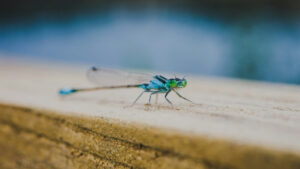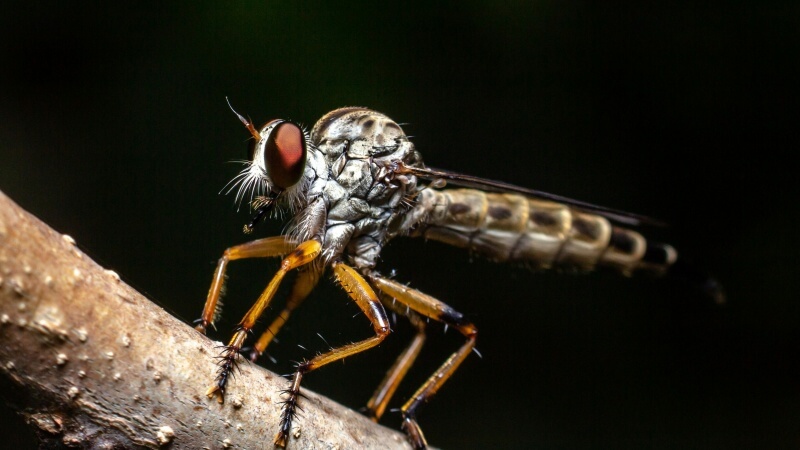
How To Design A Waterproof Mosquito Light
There’s something almost magical about a mosquito light—a beacon in the night that promises to shield us from the irksome buzz and bites of mosquitoes.

Cooking is an art, and for many of us, it’s a labor of love. There’s nothing quite like preparing a delicious meal in the comfort of your kitchen.
However, what can quickly put a damper on this culinary journey are those uninvited guests – bugs. A bug-free kitchen is something we all desire, and it’s not as elusive as it may seem.
In this comprehensive guide, we’ll explore a range of practical and straightforward tips to help you create a bug-free kitchen, ensuring that you can cook and bake without any disturbances.
Let’s dive in and make your cooking experience more enjoyable and hassle-free.
1.Keep it Clean
A clean kitchen is a bug-free kitchen. Keeping your cooking space tidy and free of crumbs, spills, and food debris is the first line of defense against unwelcome insect intruders. Regular cleaning is essential to maintain a bug-free environment.
To maintain cleanliness in your kitchen, start with a simple daily routine. After cooking, be sure to wipe down countertops, stovetops, and any other surfaces that may have come into contact with food. Crumbs and food residue can quickly attract pests. Also, sweep the floor regularly to remove any fallen bits of food.
Now that we’ve discussed the importance of daily cleaning, let’s delve deeper into the significance of maintaining a pristine kitchen.
2.Store Food Properly
Insects have a remarkable ability to detect and access even the tiniest morsels of food. To keep your kitchen bug-free, it’s vital to store all food items in airtight containers. This applies to grains, pasta, cereal, flour, sugar, and any other dry goods that you have in your pantry.
Bugs like pantry moths and weevils are particularly drawn to open bags and containers, so sealing them up is crucial.
Additionally, don’t forget about your fruits and vegetables. Store them in the refrigerator or in sealed containers, as overripe fruits can attract fruit flies. By taking these precautions, you’re effectively closing the door to your kitchen to any potential bug invaders.
With your pantry well-organized and secure, it’s time to address the issue of standing water in the kitchen.
3.Eliminate Standing Water
Bugs, particularly mosquitoes, are attracted to standing water. In their quest for a breeding ground, they’ll settle for any stagnant water they can find.
To keep these pesky insects at bay, it’s essential to check for and fix any leaky faucets in your kitchen. A dripping faucet can create a small pool of water that mosquitoes will gladly call home.
In addition to fixing leaks, it’s also essential to wipe up any spills or puddles promptly. A wet kitchen is not only inconvenient but also invites insects into your home.
So, ensure that you eliminate standing water promptly and thoroughly.
1.Essential Oils
When it comes to bug prevention, nature often provides the solutions. Essential oils such as citronella, lavender, and eucalyptus have been known to repel insects effectively.
You can harness the power of these oils to create a bug-free environment in your kitchen.
To use essential oils, you have several options. You can add a few drops to a diffuser and let it fill your kitchen with a pleasant aroma while keeping bugs at bay.
Another approach is to create a DIY bug repellent spray by mixing a few drops of your chosen essential oil with water and a small amount of alcohol or witch hazel. Use this spray on kitchen surfaces, in corners, and around doors and windows.
Another natural way to keep bugs at bay is through the strategic use of herbs.
2.Herb Garden
Having a herb garden in or near your kitchen can serve a dual purpose. Not only will it provide you with fresh herbs for your culinary creations, but it can also deter insects. Herbs like basil, mint, and rosemary are known for their bug-repellent properties.
Basil, for instance, has a strong aroma that can help keep flies and mosquitoes at bay. Mint’s refreshing scent can deter ants, while rosemary is effective in repelling both flies and mosquitoes.
By strategically placing these herbs around your kitchen or in pots on your windowsill, you create a natural and fragrant barrier against unwelcome insect visitors.
Now, let’s explore some bug-repelling household items.
3.Vinegar and Lemon
A mixture of vinegar and lemon juice is not only a powerful cleaning solution but also an effective insect repellent. Both vinegar and lemon have properties that bugs find unappealing, making them an excellent choice for maintaining a bug-free kitchen.
To use this natural bug repellent, mix equal parts of water and white vinegar in a spray bottle, and add a few squirts of lemon juice.
Use this solution to clean kitchen surfaces, wiping down countertops, tables, and other areas where bugs might congregate.
Not only will your kitchen shine, but it will also smell fresh and repel insects at the same time.
1.Install Window Screens
While it’s essential to maintain cleanliness and use natural deterrents, sometimes insects find their way into your kitchen through open windows. This is where window screens come to the rescue.
Window screens are an effective barrier against flying insects. Ensure that your screens are in good condition, without any tears or holes that insects could use as entry points. If you find any damage, it’s a good idea to repair or replace them to maintain a bug-free environment.
For ultimate bug protection, consider sealing gaps in your kitchen.
2.Seal Cracks and Crevices
Insects, especially the smaller ones, can sneak through even the tiniest openings. To ensure that your kitchen remains bug-free, it’s essential to inspect your kitchen for any cracks and crevices in walls or flooring. These gaps may let insects in without your knowledge.
Caulking is a simple and effective solution for sealing these openings. Apply caulk around windows, doors, baseboards, and any other areas where you suspect bugs might be getting in. By sealing these gaps, you’re essentially shutting the door on any potential bug intruders.
Transition: Now that your kitchen is well-sealed, let’s talk about the role of lighting.
3.Use Bug-Repellent Lighting
While you can’t completely change the lighting in your kitchen, you can make choices that will discourage bugs from gathering around your lights. Bugs are attracted to certain spectrums of light, and some types of bulbs can be less appealing to insects.
Consider using bug repellent light bulbs or fixtures in your kitchen. These lights emit a spectrum of light that is less attractive to insects. They are specially designed to reduce the presence of bugs in your kitchen, making it a more comfortable place to cook and dine.
1.Take It Outside
On warm and bug-infested days, consider taking your cooking and dining experience outdoors. Cooking and dining al fresco can be a delightful change of pace and offer a bug-free solution. Bugs are less likely to bother you in an open-air setting, and you can enjoy the fresh air while you cook.
If cooking outdoors is not an option, let’s discuss another outdoor-related strategy.
2.Use Screens for Outdoor Dining
If you’re planning to dine outdoors, consider investing in outdoor screens or netting. These screens can be placed around your patio or deck to create a bug-free zone. They act as a physical barrier that keeps insects out while allowing you to enjoy your meal in peace.
These screens come in various sizes and can be easily set up and taken down as needed. They provide an effective solution for those times when you want to dine outside without being pestered by bugs.
Here are two types of pest control: professional extermination and DIY traps, you can read on and learn.
Professional extermination
If your bug problem is severe and persistent, it might be time to call the professionals. Pest control services have the expertise and tools to effectively address bug infestations in your kitchen.
Professional extermination is a reliable solution when all other methods have failed. Experienced pest control technicians can identify the source of the infestation, treat it, and provide recommendations for long-term prevention. While this is a more costly option, it can save you from the hassle and frustration of dealing with persistent bugs on your own.
For a more DIY approach to pest control, consider traps.
DIY traps
For smaller bug problems in your kitchen, you can take a do-it-yourself approach with traps. There are various types of traps designed to target specific insects. Here are a few examples:
Fruit Fly Traps: Fruit flies can be a common annoyance in the kitchen, especially if you have ripe fruit on the counter. You can create a simple fruit fly trap using a jar or a glass, a piece of overripe fruit, and a paper funnel. The fruit’s aroma will attract the flies, and they’ll get trapped inside the container.
Pantry Moth Traps: If you’ve had issues with pantry moths, you can purchase pheromone-based traps that specifically target these insects. They attract male moths, preventing them from mating and reproducing.
Ant Traps: For ant infestations, bait traps are an effective solution. Ants carry the bait back to their nest, which eventually eliminates the entire colony.
These DIY traps can help reduce the numbers of specific insects in your kitchen. While they may not offer a comprehensive bug-free solution, they can provide some relief while you address the root causes of the infestation.
A mosquito-free kitchen is not a far-fetched dream but an achievable reality with the right strategies in place. By following the tips and techniques outlined in this comprehensive guide, you can transform your kitchen into a bug-free haven where you can cook and bake without any unwelcome interruptions.
In summary, maintaining cleanliness, proper food storage, and elimination of standing water are the foundation of a bug-free kitchen.
Incorporating natural deterrents like essential oils, herbs, vinegar, and lemon will add an extra layer of protection. Installing screens, sealing gaps, and using bug-repellent lighting will ensure that your kitchen remains impenetrable to insects.
For outdoor cooking and dining, taking it outside or using screens can provide bug-free options. When faced with persistent bug problems, professional extermination or DIY traps can help eliminate the issue.
In closing, a bug-free kitchen is within your reach, and by implementing these simple yet effective tips, you can make it a reality. The joy of cooking and dining in a pest-free environment is something to savor. So, roll up your sleeves, put these strategies into action, and get ready to enjoy your bug-free culinary adventures. Happy bug-free cooking!


There’s something almost magical about a mosquito light—a beacon in the night that promises to shield us from the irksome buzz and bites of mosquitoes.

Within the first few moments of considering a mosquito light, the idea transforms from a mere concept into a beacon of hope against the nightly

The moment you switch on a mosquito light, you declare war on those pesky insects. But what if I told you that you could turbocharge

Imagine this scenario: as the hues of twilight blend into the evening sky, your mosquito light buzzes to life, standing guard against the night’s swarm

There’s something almost magical about a mosquito light—a beacon in the night that promises to shield us from the irksome buzz and bites of mosquitoes.

Within the first few moments of considering a mosquito light, the idea transforms from a mere concept into a beacon of hope against the nightly

The moment you switch on a mosquito light, you declare war on those pesky insects. But what if I told you that you could turbocharge

Imagine this scenario: as the hues of twilight blend into the evening sky, your mosquito light buzzes to life, standing guard against the night’s swarm
Copyright © 2024 mosquitokillerlight. All Rights Reserved.